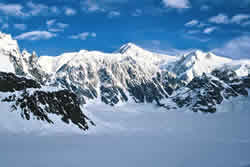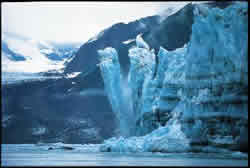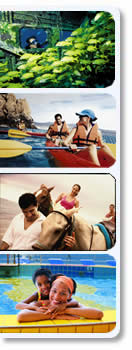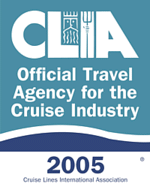News, Notes and Specials
Happy New Year! The staff of CruisePerfect.com has had a great time this year booking cruises for all the new cruisers to CruisePerfect.com as well as experienced cruisers that have put their trust in CruisePerfect.com to fulfill their cruise vacation dreams. In this months newsletter we will talk about this year’s most popular destination, Alaska. We will also let you be the first to hear about our brand new special starting January 1st, 2005.
Winter Special
We are offering one of our most exciting specials for those customers who book a cruise during the winter months for anytime in 2005 or 2006. Book online at CruisePerfect.com on Royal Caribbean, Celebrity, Carnival or Norwegian and receive a shipboard credit applied to your stateroom, it is that easy!
Select a cruise line below for the best fares to your favorite destinations |
|||
Here is how to calculate the amount of your credit, add up all the cruise fare not counting any taxes and fees or airfare charges and use the simple chart below to see your credit...

Complete details of this offer available here.
Spotlight on Alaska
Introduction
 Once
upon a time, some 5,000 to 40,000 years ago, a strip of land connected
the American land masses to Asia. Known as the Bering Land Bridge, it
guided animals and people into a new life as settlements sprang up around
what we know today as Alaska. That bridge is long gone, but during winter,
when the Bering Strait freezes over, it is still possible to walk across
the Strait -- from Little Diomede Island in the US to Big Diomede Island
in Russia.
Once
upon a time, some 5,000 to 40,000 years ago, a strip of land connected
the American land masses to Asia. Known as the Bering Land Bridge, it
guided animals and people into a new life as settlements sprang up around
what we know today as Alaska. That bridge is long gone, but during winter,
when the Bering Strait freezes over, it is still possible to walk across
the Strait -- from Little Diomede Island in the US to Big Diomede Island
in Russia.
Russia governed Alaska as a colony for nearly as long as the US has governed as a territory and state. This early Russian heritage is very much alive today, through quaint villages and historic architecture. Russian names dot the geographical landscape. But long before Russians arrived, Tlingit, Haida, and Tshimshian Indians thrived in southeast Alaska, a region of lush forests and a mild climate, with an abundance of fish, game, and edible plants. Inland tribes, such as the Athabascans, faced a harsher reality, with severe weather and famine more common occurrences.
The US purchased Alaska from Russia in 1867, but the territory did not become a state until 1959. Today the diverse Native peoples remain a strong presence in the state, and much of the native culture is still practiced.
Alaska is divided into five distinct regions. The Inside Passage was shaped millions of years ago when massive glaciers sliced their way southward, leaving behind wildlife-filled fjords and lush island scenery. Here are habitats for bald eagles, sea lions, porpoises and whales, and majestic forests carpet its mountains.
The Southcentral is home to over half of Alaska's human population. This civilized gateway to the wilderness offers a myriad of activities.
In the Interior, Alaska's heartland, are wide expanses of Tundra and Mt. McKinley. Forests teem with wildlife, from the fearsome grizzly to the majestic caribou. Look for the Willow Ptarmigan, Alaska's state bird, along the highway to Denali National Park.
The Far North is filled with natural wonders, including the Gates of the Arctic National Park and Preserve. This region is also home to the Inupiat Eskimos, who pass their history verbally from one generation to the next. Their natural lifestyle coexists and contrasts with modern oilfield technology.
The Southwest is home to Katmai National Park, whose volcanic landscape resulted from the 1912 eruption of the Novarupta volcano. This is a naturalist's paradise: brown bears saunter along, accompanied by more than 240 species of birds. It I from here that the Aleutian Islands begin their 1,000-mile sweep toward Asia.
Welcome to the home of summer's midnight sun and winter's northern lights. Welcome to Alaska, the Great Land!
Attractions & Activities
 Alaska
is big -- its 570,373-square-mile area is one-fifth the size of the continental
US and over twice the size of Texas. With that much area to cover, you
must do some serious prioritizing. This incredible state offers fishing,
bird- and wildlife-watching, skiing (both downhill and cross country),
cruising, sightseeing, as well as historical and cultural activities and
adventure and Ecotourism, and much more. Where do you want to start?
Alaska
is big -- its 570,373-square-mile area is one-fifth the size of the continental
US and over twice the size of Texas. With that much area to cover, you
must do some serious prioritizing. This incredible state offers fishing,
bird- and wildlife-watching, skiing (both downhill and cross country),
cruising, sightseeing, as well as historical and cultural activities and
adventure and Ecotourism, and much more. Where do you want to start?
Attractions:
The variety of activities available to you is as diverse as the land and
people. Since 1995, Alaska has designated 11 state scenic byways. In 1998,
the Seward Highway was designated a National Scenic Byway. The others
are: the Alaska Railroad, Marine Highway System, Dalton Highway, Glenn
Highway, Haines Highway, Parks Highway (Denali State Park to Healy), Richardson
Highway (from Glenallen to Valdez), Steese Highway, Sterling Highway from
Wye to Skilak and from Anchor Point to Homer, and the Taylor -Top-of-the-World
Highway.
The Treadwell Mine History Tour is a self-guided hike along the Treadwell Trail beginning at Sandy Beach on Douglas Island. A map with information on the mining history of the area is available at the Juneau-Douglas City Museum or Davis Log Cabin Visitors Center. The largest stamp mill in the world (960 stamps) was located here. At one time, Douglas was the largest city in Alaska.
Don't forget the mountains: 17 of the nation-s 20 highest peaks are in Alaska, including Mt. McKinsey (20,320 feet/ meters), the tallest mountain in North America. There are also more active glaciers in Alaska than in the rest of the inhabited world, with around 100,000 glaciers in all. The Marine Highway System covers 3,500 miles and serves 30 ports. Alaska has 3 million lakes, over 3,000 rivers, and more coastline than the entire continental US - 47,300 miles. As for parklands, there are 15 National Parks, Preserves, and Monuments, and 3.2 million acres of State Park lands.
And if that isn't enough to impress you, think consider this: Alaska
is home to the largest known concentration of bald eagles; over 3,000
converge near Haines from October through January to feed on late-run
salmon in the Chilkat River.
Landmarks:
Alaska has far too many landmarks to name them all. Here are some of the
highlights.
Houston is the historic crossroad for numerous trails accessing placer gold mines on Willow Creek. Take the scenic 15-mile gold trail to Little Willow Creek on the west side of Independence mine. The trail leads to the heart of the Willow Creek mining district. Today, the area is popular for its recreational opportunities and scenic beauty. Additional trails may be accessed at the end of the Houston trail, taking the visitor into ghost towns of hard rock gold mines.
Central has the area's only surviving roadhouse and a mining museum. In Chicken, log cabins and the schoolhouse featured in the book Tisha still stand. Chitina is a living ghost town, and several mining era buildings remain. Many miners went to Circle Hot Springs to relax, and it is still open to the public today. Copper Center had a trading post in 1896; in 1898-99, 300 prospectors wintered here. The village became the principal settlement and supply center in the region. Dyea's dock pilings and the cemetery for victims of an avalanche at Chilkoot Pass are among the remains of the town at the base of the Chilkoot Trail. In Eagle, a number of buildings remain, including Fort Egbert, the courthouse and waterhouse. The historical society has tours and many exhibits. Iditarod is ghost town that was a supply center on the Iditarod Trail. Juneau has many Gold Rush homes, businesses, and mine buildings remaining, including the remnants of the Alaska Juneau Mining Company. The city and state museums have mining exhibits.
Other landmarks are Jack London's Cabin in Dawson City, Yukon Territory;
the Largest Gold Pan in the US, Nome; Skagway's Gold Rush Cemetery and
Broadway, its most famous street; Dyea and the Chilkoot Trail; Klondike
Highway and Trail of '98; Chickaloon-Nelchina-Knik Trail, Sutton; the
historic town of Chicken; Mineral Creek Canyon near Valdez; and the Stikine
River and Cottonwood Island.
Anchorage
 The
home of more than half of the population of Alaska is known as both the
"City of Lights" (winter) and the "City of Flowers"
(summer). It possesses all the cultural amenities and activities one would
expect from any urban center, but this one just happens to be surrounded
by awe-inspiring wilderness.
The
home of more than half of the population of Alaska is known as both the
"City of Lights" (winter) and the "City of Flowers"
(summer). It possesses all the cultural amenities and activities one would
expect from any urban center, but this one just happens to be surrounded
by awe-inspiring wilderness.
The city and seaport are located at the head of Cook Inlet. Its amenities include luxury hotels, fine cuisine, interesting shopping, and area state parks. This popular visitor destination serves as the center of commerce for the region. Founded in 1918 as a railway construction camp, it was severely damaged in 1964 by an earthquake. Evidence of the damage still exists at Earthquake Park.
With Anchorage as a jumping-off point, you can journey south and discover the Kenai Peninsula, a scenic jewel and fishing paradise. Visit the quaint seaside communities and experience Kenai Fjords National Park. To the west is Wrangell-St. Elias National Park, home to nine of the 16 highest peaks in the US. Don't forget to visit the Matanuska-Susitna Valley with its fertile farmland where they really do grow giant vegetables, and it's set against the majestic backdrop of the Chugach Mountains.
So come on up to Anchorage. You'll be glad you did!
Seward
Seward is a beautiful little town and one of Alaska's oldest communities. Situated at the head of Resurrection Bay on the Kenai Peninsula, it is known as the "Gateway to Kenai Fjords National Park." This town of about 3,000 is surrounded on all sides by mountains and overlooks the blue waters of the bay. The weather is frequently rainy, but on a reasonably nice day, the view is spectacular. Approaching from the bay allows you to view the town against magnificent Mt. Marathon (3,022 feet/921 meters).
The Harding Icefield (35 by 20 miles/56.3 by 32.2 kilometers) extends downs the coast between Seward and Homer, spawning glaciers (eight of which are tidewater glaciers) and calving icebergs into the bay.
This Gold Rush town was founded when developers tried to build a railroad from a year-round port to the gold diggings in the Interior. Two companies went bankrupt before the federal government finally undertook the project in 1915. Prior to that time, Seward had served as a winter port for miners from Nome and Iditarod, who followed the mail route now known as the Iditarod National Historic Trail.
This busy port is home to the Alaska Sealife Center, and other tourism
activities are plentiful and varied. Eagles and otters are commonly seen
from shore. You might want to try the 6.5 hour glacier cruise, which travels
throughout Resurrection Bay. The bustling harbor and historic downtown
district are filled with quaint shops and art galleries.










